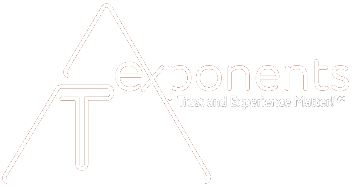Beat the M&A Odds with a People-First Approach from T Exponents
Mergers and acquisitions bring a lot of anticipation, expectations, and enthusiasm. While the idea of increased market share, a strengthened core business, expanded product lines, enhanced technologies, and reduced costs—drive the desire to find that perfect strategic partner, studies have shown that that over 80% of merger and acquisitions fail to achieve targeted expectations. So why are so few M&As successful?
In reality, this less-than-20% success rate does not mean that the mergers and acquisitions fail on paper. But it does mean that they don’t meet expectations, and the new entity does not function as it should. Are the expectations too high? What should we expect with a merger or acquisition? How do we improve the chances for success?
While this gap between expectations and reality is often attributed to overly enthusiastic and optimistic expectations, the underestimating of the impact of the change on the people and culture is the greatest driver of this wedge. Each business has a unique ecosystem—and the people that keep that business—in business—have their own social behavior, work processes, communication styles, and norms. While it may be easy for a Mergers and Acquisitions Consultant to come in and show you how easy two businesses can integrate customers, products, and finances, what few take into consideration are the human capital element that power the business in the first place.
Managing change as the relationship evolves is what M&A really is about. As two organizations join—the financials changes, the legal changes, and the culture shifts—a new relationship is created. How that change is managed determines success. However, mergers and acquisitions are very different from each other. They each have their own set of objectives based on the relationship between the acquiree and the acquired company.
Mergers and Acquisitions (M&A) – The Why
Mergers and acquisitions may very often fall short of expectations, but still have value. They are the fastest way to enter a new market, adding a new product line, or increasing reach to the consumers. Mergers and acquisitions can also provide an opportunity to transform a firm’s corporate identity. Amongst the many reasons for acquisition is the fact that the purchased company can transform the buyer, by empowering the leadership to take a new direction or add a new competency—spurring innovation and growth.
Activity Drivers
Mergers and acquisitions are driven by the economy, the availability of capital and where a particular buyer or seller is in its business cycle. Although M&A activity tends to slow down during economic downturns and high inflation periods, certain industries and sectors often see increased M&A activity due to consolidation. In the first few months of 2022, the Trucking and Transportation sectors have continued to see robust activity. Mergers and acquisitions are primarily initiated when there is a prevailing trend in the industry. Here are the most common industries and their core trends driving a merger or acquisition.
1. Technology – rapidly advancing technical changes
2. Telecommunications and Banking - fierce competition
3. Aerospace and Defense – federal budget reductions or technology
4. Food and Beverage – changing consumer preferences or economy
5. Healthcare – rising costs
6. Trucking, Transportation, and Logistics – rising inflation and energy costs
Beating the Odds
To be one of the companies whose mergers or acquisitions beat the odds and meets the expectations, the first step is to initiate a due diligence process to counter the natural enthusiasm which can cloud decision-making. The next step is a well-planned, thoughtful transition roadmap, to manage the cultural change and reduce post integration shock, loss of talent, and motivation.
Example: Healthcare’s Strategy Merger and Acquisition Activity
Mergers and acquisitions in the healthcare industry have always been driven by costs and managing through economies of scale. Yet, in reality, the M&A activity in the past has been more horizontal – hospitals merging, physicians creating partnerships, pharmacy benefit managers (PBM) buying up other PBMs, etc. The new emerging strategy is vertical integration - integrating hospitals, physician offices, labs, imaging, pharmacy, therapies, and medical devices - along a community’s continuum of care. The focus is on overall costs. It is driven by the assumption that effective management of best practices across a community’s care continuum will enhance the community’s health and reduce overall costs. This is also the assumption that drives the Accountable Care Organizations (ACOs) strategy. Connecting entities financially is something mergers and acquisitions do well. Unfortunately, they don’t have a good track record for connecting the people within these entities. Healthcare, more than any other industry, is driven by the people caring for people, and this is where healthcare M&A often fails. It forgets what the collective goal is of the people and the organization… the people.
Merger and acquisition activity is where organizations demonstrate their character. The strategy for organizing mergers and acquisitions along a community’s continuum of care makes sense. A well planned and implemented change management program, which includes a people-first approach, will determine if it will beat the odds.
Wendy Kristek is the CEO and Co-Founder of T Exponents with 20+ years of experience in mergers and acquisitions, divestitures, public accounting, supply chain, large program implementations, business process design and implementation. Wendy has led many large Healthcare, Supply Chain and Communications Mergers
Ken Nowak is a Managing Director at T Exponents with 10+ years of experience in mergers and acquisitions, large program implementations, supply chain/manufacturing, and business process design. Ken has led several mergers and divestitures within Communications and High Tech including with Sprint, Ameritech, GTE Wireless, InfoSpace, and others.
If you would like to discuss ways that T Exponents can help you with your M&A strategy, please click the “Learn More” button below.
DRIFT IQ LLC DBA T EXPONENTS™ PRIVATE, PROPRIETARY AND CONFIDENTIAL. COPYRIGHT © 2022 T EXPONENTS™. ALL RIGHTS RESERVED.

